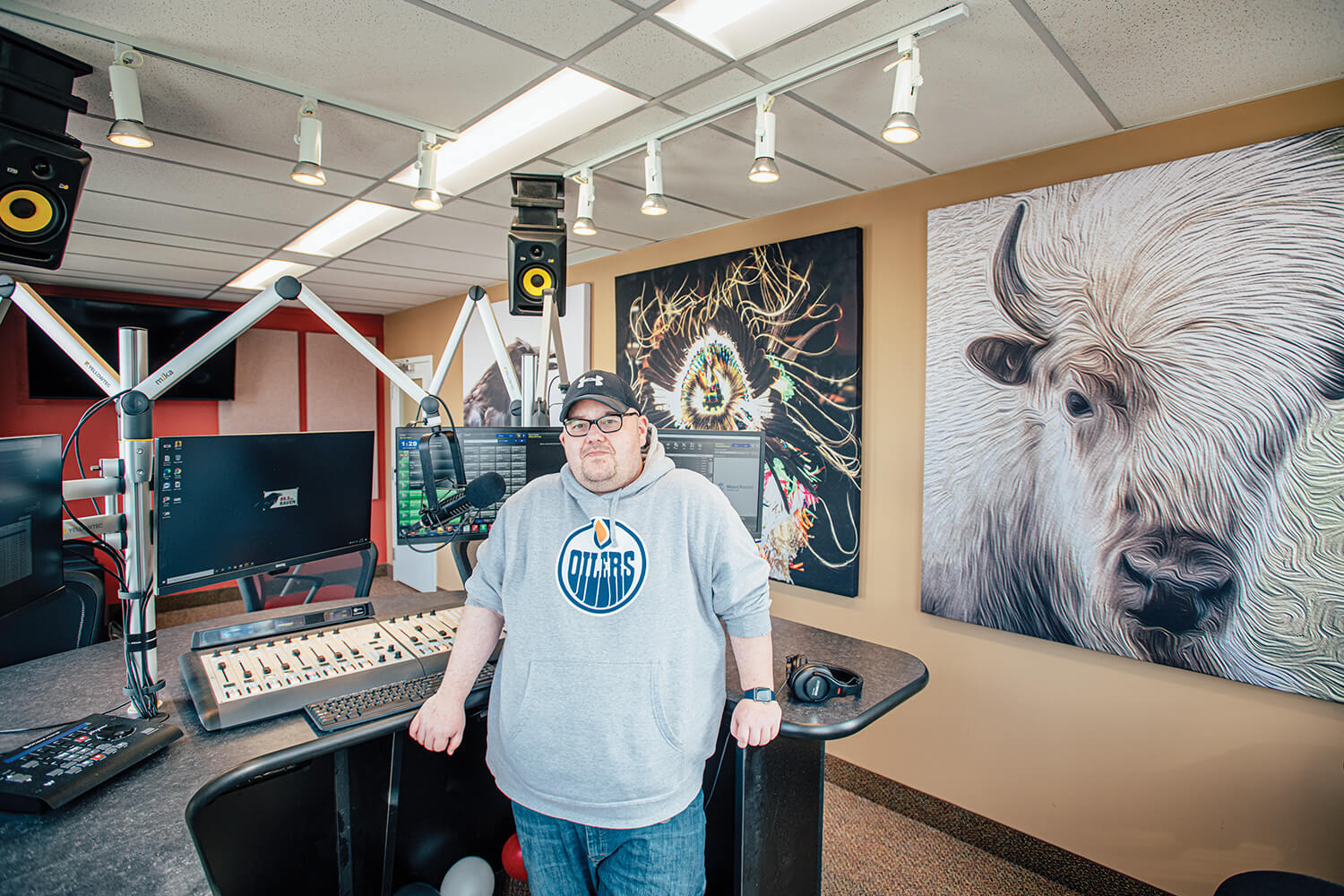Bert Crowfoot set his alarm at 5:50 a.m. on Feb. 1, excited to hear the launch of The Raven 89.3 FM, Edmonton’s newest Indigenous radio station (CJWE Windspeaker was the first). Instead, he heard the most terrifying thing anyone working in radio could hear: dead air. He called the station immediately and found out it was intentional. Program Engineer Owen Martin had only turned off the 50-song loop that had been testing the signal, in preparation for the first words spoken.
As the founder and CEO of the Aboriginal Multi-Media Society of Alberta (AMMSA), Crowfoot’s helped launch many media outlets around Alberta, and this is the Society’s third radio station. “I’m too old to be a father,” Crowfoot laughs, “so I was sitting here like an expectant grandfather, excited to hear what the parents — the staff — were going to do with our baby.”
After a Cree prayer, the first words spoken were Crowfoot’s, welcoming everyone to Raven and thanking the staff and engineers for what ended up being a successful launch (every morning since starts with a Indigenous prayer). And they made a deliberate choice for the first official song: “Universal Soldier” by Buffy Sainte-Marie, who in the ’70s was blacklisted by many radio stations for her anti-establishment, anti-war stance. The Raven plays pop, rock, hip-hop and blues (AMMSA’s other radio stations have classic country covered, Crowfoot says), but the selection of Sainte-Marie set the station’s philosophical tone as a platform for Indigenous and emerging artists of all kinds.
Indigenous language is important too. The station incorporates the Albertan Indigenous languages (Blackfoot, Cree, Nakoda Sioux, Dene and Michif) in its imaging and splitters. And, in between, Shannon Medaglia in the mornings and Bill LeBlanc (aka Rellik) with the Tribe Drive show, there’s a mid-day Conversational show that alternates between Cree and Nakoda, with hosts sharing stories, in both Cree/Nakoda and English, one sentence at a time. It’s unlike anything you’ll hear on Edmonton radio, and Crowfoot is confident it will find success. “I know this works, because we did it on another station. I remember getting a call from this non-Indigenous lady who said she was with her son on the way to the store, listening to an elder on air telling a story. And they couldn’t go in to the store, because they needed to hear the end of the story, so they sat in the car for another 15 minutes. So we’re sharing the knowledge and stories of our people with non-Indigenous people, but also with Indigenous people who haven’t learned the language.”
